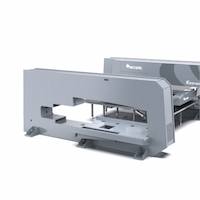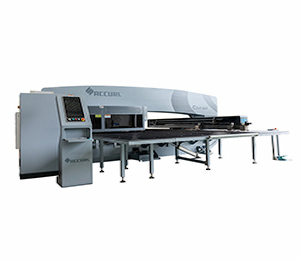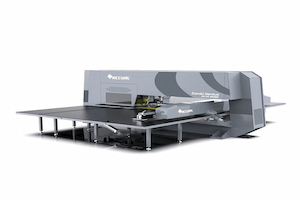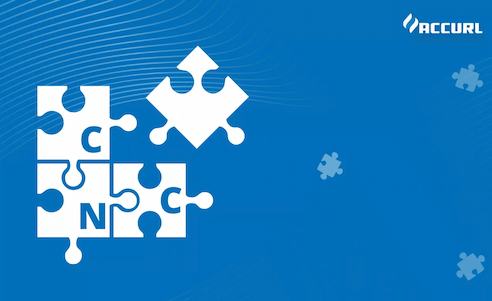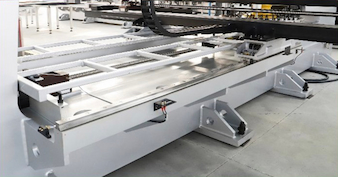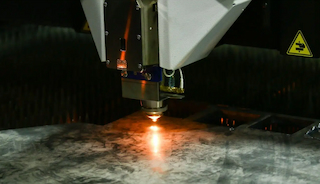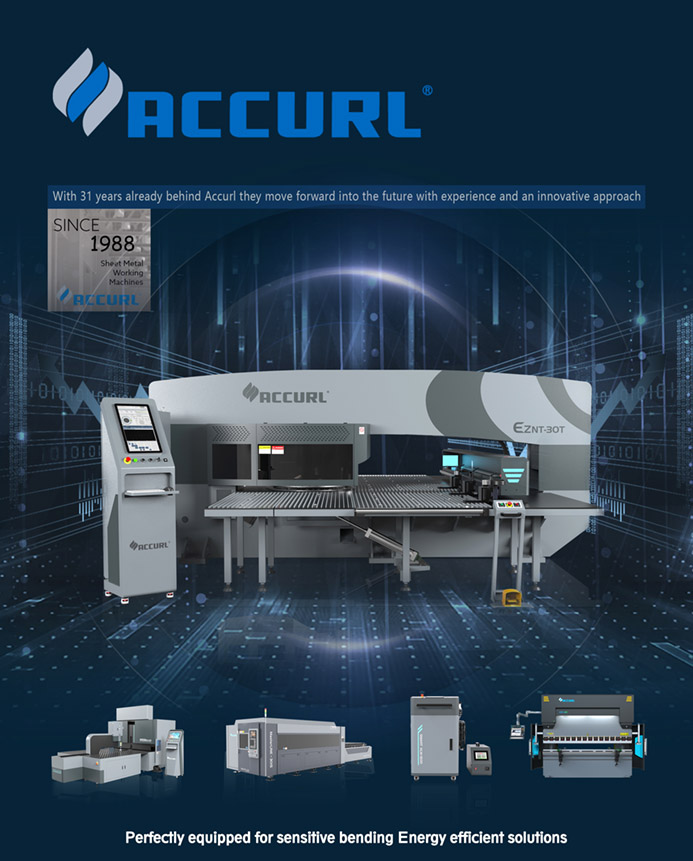What are the advantages of using high efficiency turret punching?
Sep 10, 2025
High-efficiency turret punch presses are core equipment in modern sheet metal processing. Through automation, intelligence and high-speed technologies, they bring revolutionary advantages over traditional punch presses or early CNC turret punch presses. These advantages are mainly reflected in aspects such as production efficiency, processing capacity, cost control and flexibility.
1.Extremely high production efficiency and speed
This is the most direct manifestation of "efficiency".
High-speed operation: The stamping frequency of modern high-efficiency turret punch presses is extremely high (up to 1,000 times per hour or even more), and the positioning speed of the X/Y axes is also extremely fast, significantly reducing the processing time of individual parts.
Quick die changing: Most high-efficiency turret punch presses are equipped with an Auto-Tool Indexing function. The die station on the turret can rotate automatically, quickly moving the required dies to the stamping position, eliminating the downtime caused by manual die changing. Some high-end models even feature multi-station turrets (such as 20-station, 30-station or more), allowing for the installation of more molds to handle complex parts without the need for mold changes in the middle.
Reduce non-processing time: The efficient numerical control system (CNC) optimizes the stamping path, reducing the idle travel time of the punch on the sheet metal.
2. Strong complex processing capabilities
One-time molding: Multiple processes such as punching, stretching, forming, embossing, tapping, louver, and ribbing can be completed in one clamping. A complex part may only require one set of programs to complete and does not need to be transferred to other machine tools for secondary processing.
Special molds can be used: Multi-Tool or Auto-Indexing Tool can be equipped. A mold station contains multiple small molds that can be automatically selected for use, greatly expanding processing capacity without occupying additional workstations.
Repositioning technology (Reresting) : for parts with dimensions larger than the turret spacing, the machine tool can hold the sheet metal, move it and then reposition it to achieve "step punching" processing, thereby machining holes and contours larger than the theoretical stroke of the machine.
3. Outstanding precision and consistency
High-precision positioning: Utilizing precise servo motors and linear guides, the positioning accuracy of the punch in the X and Y directions is extremely high (up to ±0.1mm or higher), ensuring that the position of each hole and contour is accurate without error.
Eliminate human error: The entire processing procedure is controlled by CNC programs and is fully automated. As long as the program is correct, each processed part will be exactly the same, with stable and reliable quality, making it very suitable for mass production.
4. Significant automation and flexibility
Easy to integrate with automated units: High-efficiency turret punch presses are the ideal core for building flexible manufacturing units (FMCS) or automated production lines. It can be easily connected to automatic loaders (Loader), unloaders (Unloader) and stackers (Stacker), achieving unmanned production (Lights-Out Manufacturing) for several hours, significantly reducing labor costs and improving equipment utilization.
Quick task conversion: When changing processed products, simply call the new processing program in the CNC system without the need for complex mechanical adjustments. This "soft switch" makes the production of small batches and multiple varieties very economical and efficient.
5. Reduce overall operating costs (TCO)
Labor saving: With a high degree of automation, one operator can manage multiple devices simultaneously, reducing the reliance on skilled workers and labor costs.
Reduce material waste: CNC systems usually come with automatic Nesting software, which can optimize the layout of parts on the sheet, maximize material utilization, and reduce waste.
Improve equipment utilization: Due to its high speed, short mold changing time, and the ability to operate automatically, the actual effective working time of the equipment is reduced.
Energy conservation: Compared with large laser cutting machines, turret punch presses usually consume less energy when processing thin plates with dense hole arrays.
6. Improve the working environment and safety
High safety: Modern equipment is equipped with multiple safety protections, such as light curtains, safety fences, interlock devices, etc., to ensure that operators are isolated from high-speed moving components.
Low noise and pollution: Compared with traditional stamping, high-efficiency turret punch presses usually operate in closed or semi-closed environments, resulting in less noise. At the same time, unlike laser cutting, it does not produce smoke and dust, making the working environment cleaner.
if you have more ideas, please contact us!
Tel: +86 -18855551088
Email: Info@Accurl.com
Whatsapp/Mobile: +86 -18855551088
